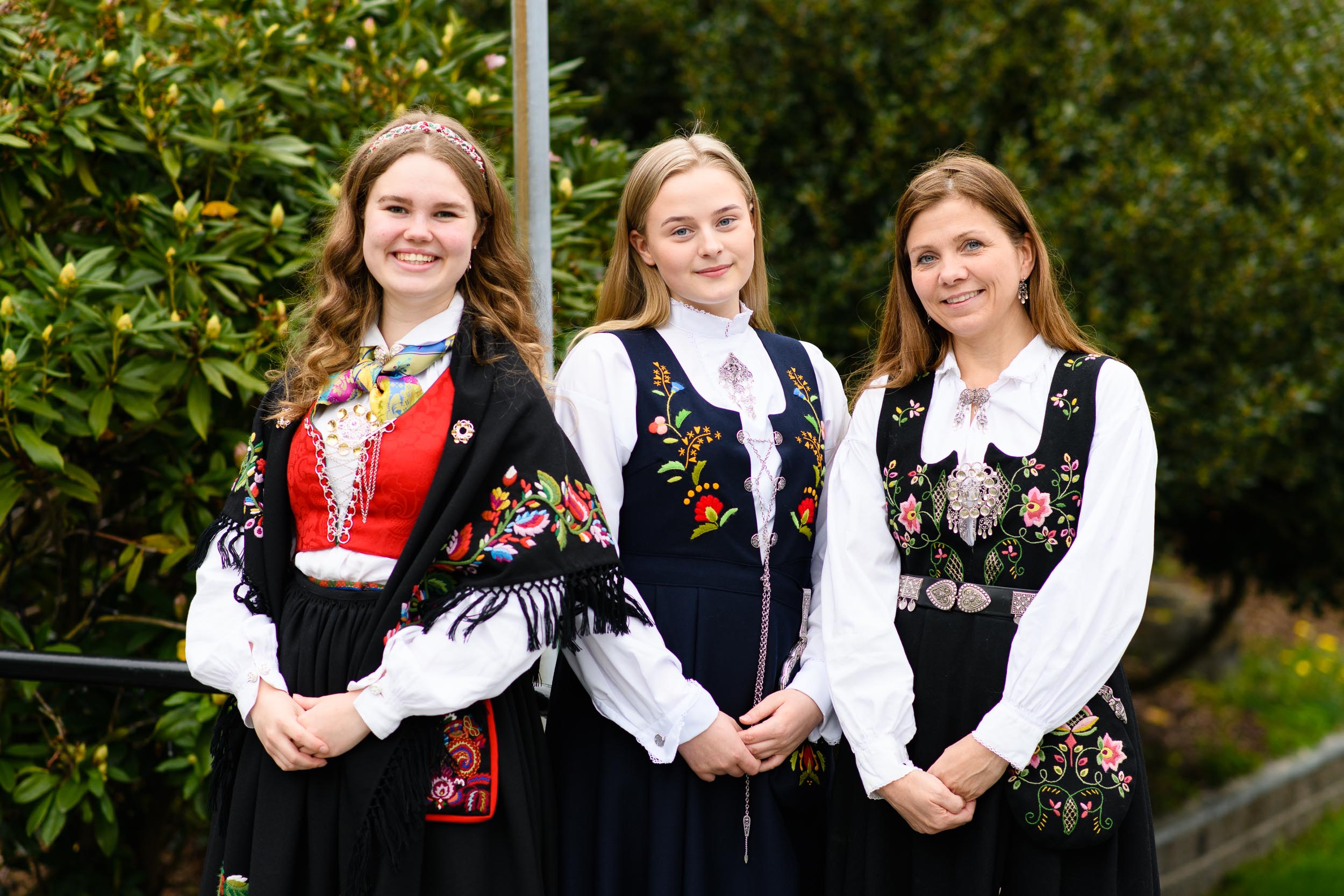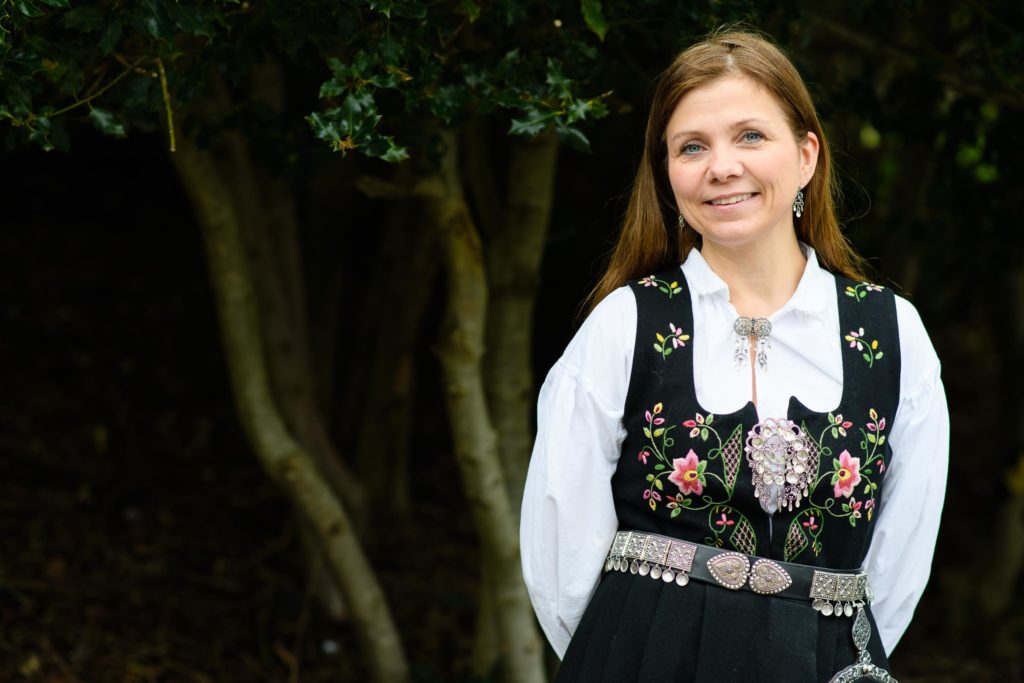
What Is A Norwegian Bunad?
Simply put, the Norwegian Bunad is a folk costume based on traditional rural clothing and 20th-century folk costumes.
But what makes the bunad so special? How come you don’t see them every day on the streets of Oslo? Are only women allowed to wear a bunad? Where can I get one for myself? How do you put one on?!?
These are the questions I will hope to answer for you, along with photographs and stories from my travels to southern Norway in 2019 where I was fortunate enough to witness some of the dress in the wild. I learned about the process of putting one on, found them at a small family gathering, and witnessed them in full form on the 17th of May, Norway’s Constitution Day.
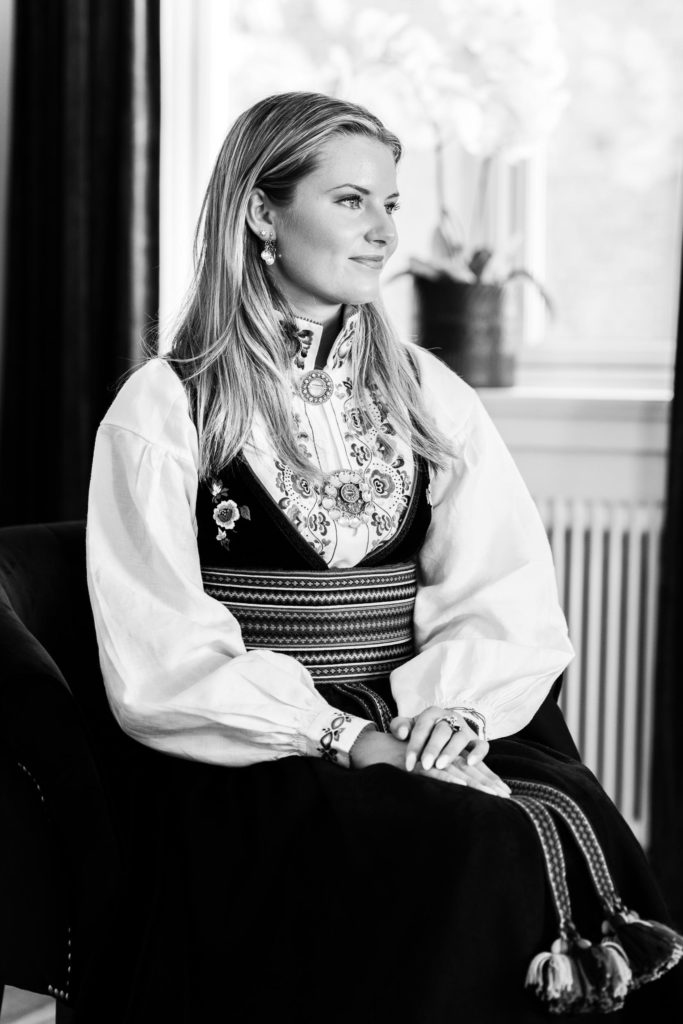
Not An Ancient Tradition
The roots for this traditional dress stem back to Norwegian national romanticism, a time when Norwegians were making a concerted effort to remember and unify their own identity. It was a time of finding the everyday items, the stories, the buildings, and eventually the clothing that made them unique. These pieces were sought after in the isolated valleys, at coastal outposts and in mountain villages, where some traditional costume lineages had been in unbroken use since the 14th Century.
Romantic nationalism really gained momentum in the mid 19th century. By combining traditional rural dress with a desire for contemporary self-identity, the bunad was born.
The bunad is an evolving tradition. Due to the costume’s rural roots, distinct regions of Norway have their own representation. Various colors, styles, and fabric options identify their geographic origins. As western values and traditions have become widely accepted around the world, the bunad has adapted. One such example is the exclusion of the headpiece, once viewed as a major piece. This has come in favor of showing off hairstyles, and if you’ve seen my hair you know I’m totally on board with that. These changes have lead to more debate on what may constitute true bunad. It is the goal of an organization called the NBF, Norwegian Institute for Bunad and Folk Costume, to sustain traditions of folk costumes, prevent deterioration of the manufacturing of bunads and give advice on the construction of new bunads.

Who Gets To Wear A Bunad?
Anyone who wants to!
Often seen being worn by women, there are bunad for men as well. In fact according to a post in the Aftenposten from 2010, “However, according to daily manager Turid Liss Agersborg at Husfliden Oslo, they now produce and sell more men’s bunads than women’s for the first time in history. The male customers are often characterized as urban and modern, and range between the ages of 20 and 40 years old.”

One of the widely accepted rules of wearing bunad is that the style you choose represents an area of great importance to you. If you are Norwegian, it could be significant for where you, a parent or grandparent were from. Though I am not Norwegian, after my most recent trip and discovering the valley of my ancestors (if that’s not a title for an Indiana Jones/Hallmark movie I don’t know what is), I might choose a design from there.
However, it does get more complicated. In Norway 2020, not everyone looks the same. Today you can find native born Norwegians whose family may have come from countries such as Syria, Somalia, Pakistan. It is tough to navigate the feelings associated with wearing the traditional costume. For many, it can be a damned if you do, damned if you don’t scenario. It is my hope that anyone who would be proud to wear a bunad will eventually be able to do so without judgement.

When Do Norwegians Wear Their Bunader?
Syttende Mai (May 17th), Grunnlovsdagen (Constitution Day), Nasjonaldagen (National Day)

Hands down, if you wanted to see a bunad on a live person in Norway, you would want to be there on the 17th of May. This is Norway’s National Day/Constitution Day, when the whole country comes out en force to celebrate Norway’s independence.
There’s no 100% participation rate, but on this day of celebration and mass gathering you will see more people out in their traditional garb than not. It is truly a special sight to see, especially in Oslo. Here you get the largest collection, right along Karl Johans Gate where the main children’s parade takes place and you can waive to the Royal Family. I was so excited to finally witness it in person after so many years feeling like I had picked the wrong semester to study in Norway. ( I did a fall semester in 2006, only to find the best Norwegian party would happen after I left)
I could have spent the entire day just photographing the different variations of the bunad. Additionally, I learned of changing traditions with the costume as more and more foreigners are calling Norway home. As expats, refugees and others shift into calling Norway home, I’m sure the style will continue to evolve.
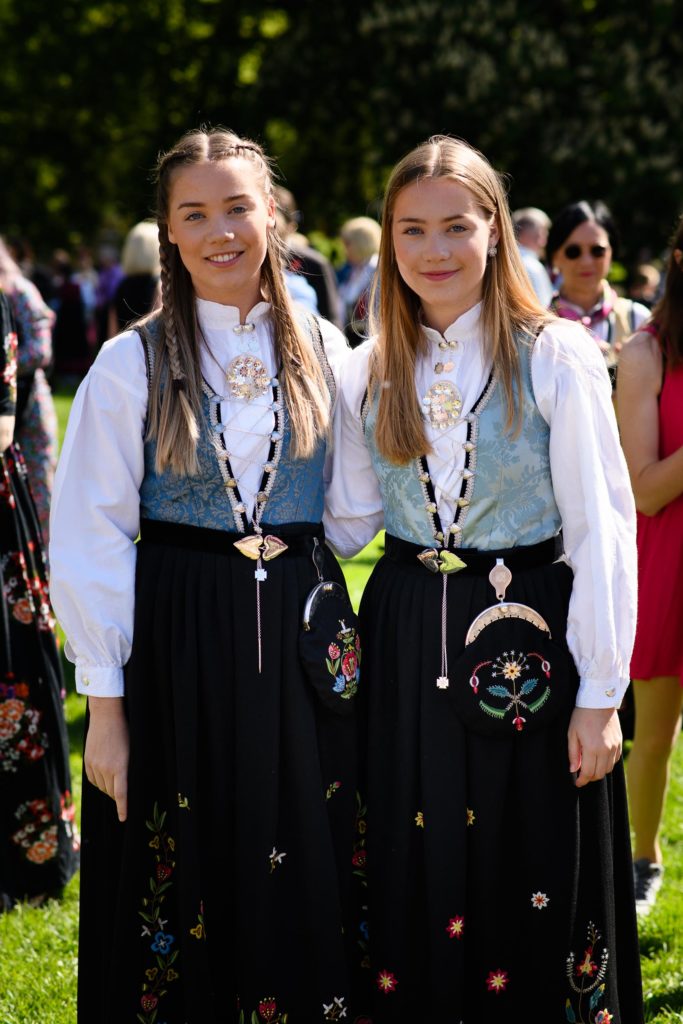
However, this is not the only day of the year when wearing the bunad is acceptable. It is considered a festival garment, and can be worn on any day that warrants celebration. Oftentimes these are religious occasions, which can include baptisms, weddings, Christmas, and confirmations.
During my road trip around southern Norway, I came across one such event. There is something special, when you’ve heard about a cultural tradition but then experience it in real life. Having known about the traditional Norwegian dress but then coming across a confirmation, it made the disconnect of story a reality. Of course I had to stop them and ask if I could get a photo. Also while doing family history and meeting my 9th cousins, I was offered a chance to photograph a distant relative modeling her bunad that was being washed and prepared for Syttende Mai.
Bunad Rules
In order to avoid run-ins with the bunad police, you will want to follow the rules of the bunad.
Ironically, I won’t delve into the official-ness too much. This is a bit of a gray area, and like many things in life there is no hard and fast way to do it ‘correctly’.
I will say, however, there are a few things that should be held to. As mentioned before, you should have some tie to the design and pattern of your bunad. As the tradition was meant to reference your roots, you will want to be able to align yourself with it on a deeper level than, “Well I just really like blue.” Also, the bunad is an ornate garment steeped in tradition.
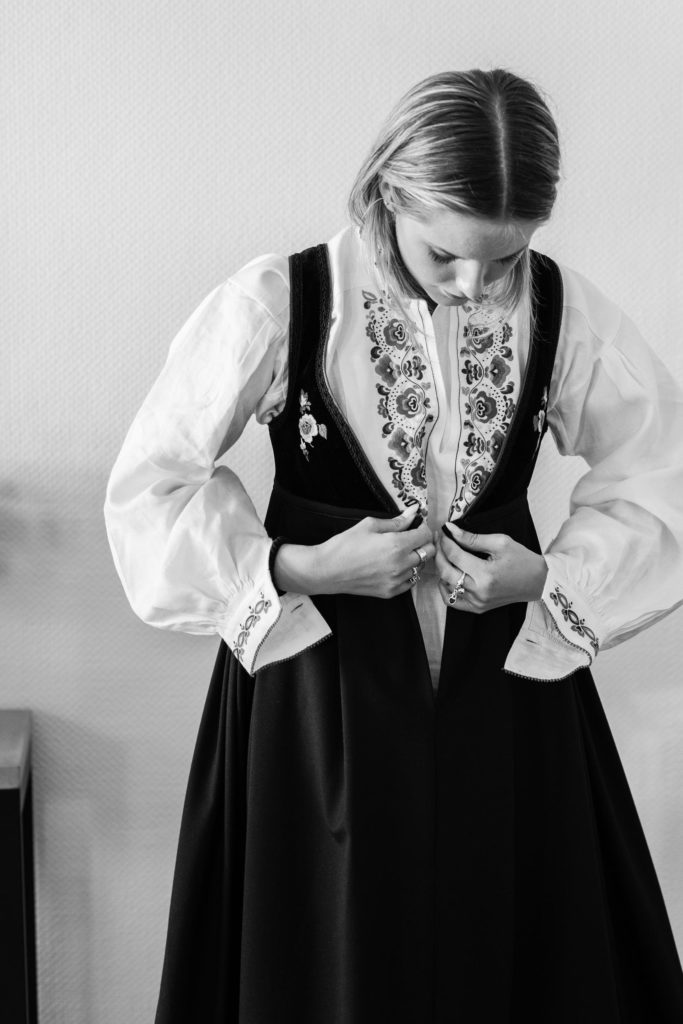
Make sure your bunad procurement results in a quality costume. For many, it is tradition to hand craft them and present them as gifts. You may inherit one from a relative. There is of course the option to purchase them, from such companies as Husfliden.
In general I prefer the road of ‘Quality over Quantity’ and a bunad reflects that. As long as they are made of high quality fabrics, and the workmanship is of high caliber, then it should represent you well and last a lifetime. As with anything, there are also now cheaper Chinese alternatives which, though more affordable, could threaten the level of quality.
Accessorize, Accessorize, Accessorize
No bunad would be complete without a few bits and bots. These come in the form of embroidery, scarves, shawls, or silver jewelry such as the sølje, or brooch.
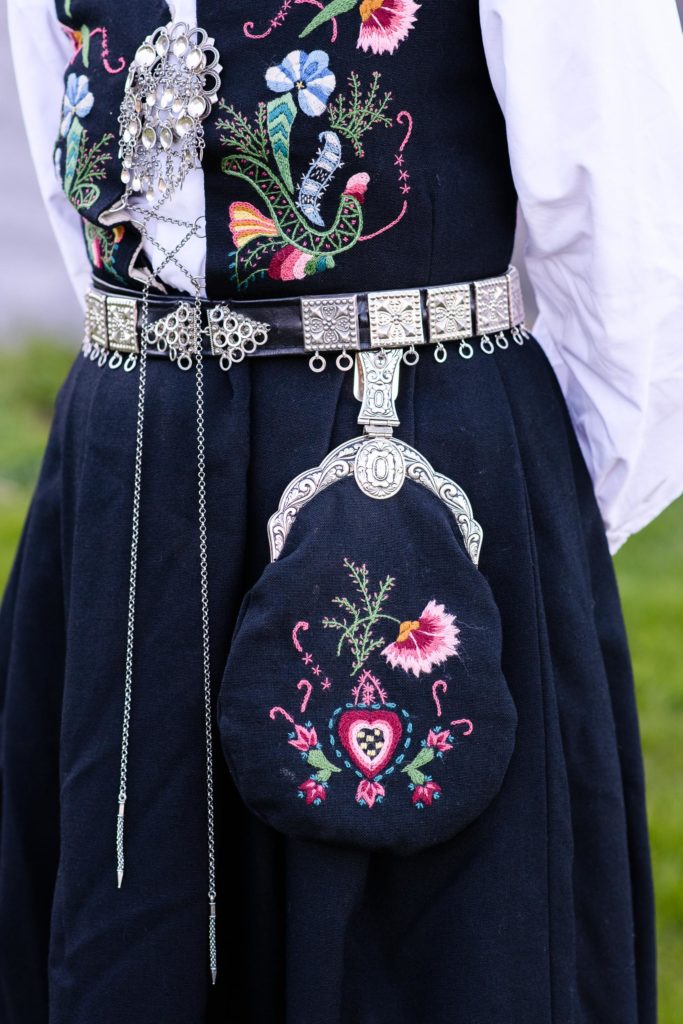
Historically, trolls were the best silversmiths. The Norwegian documentary “Trollhunter” doesn’t cover this topic in depth but it’s worth a watch. This being widely known, silver was a valuable and precious metal to Norwegians. Many learned the trade of silversmithing as an extra income to farming. Whether homemade or purchased, these silver pieces were family heirlooms passed down through families to accompany their bunad.
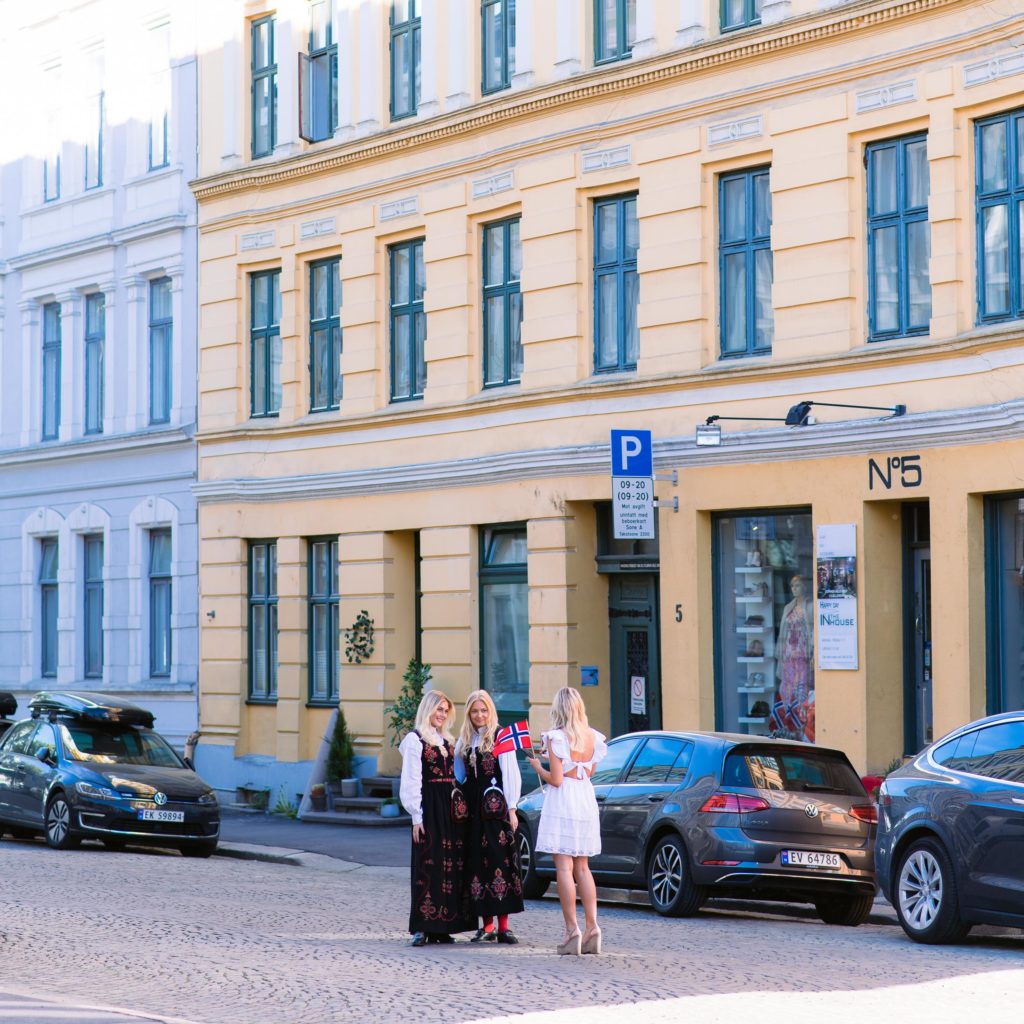
Frequently Asked Questions:
This post contains affiliate links. To learn how these support The Spur Trail, you can find everything here.
If you have questions, I would love to know what you would love to know. Please leave a comment below and I will do my best to answer it. What started as a small post got more and more in depth the more I researched and I will at some point have to elaborate even more I am sure. Here is what has been asked so far:
How do you put on a bunad?
Oh, there’s a video for that…check it out right here.
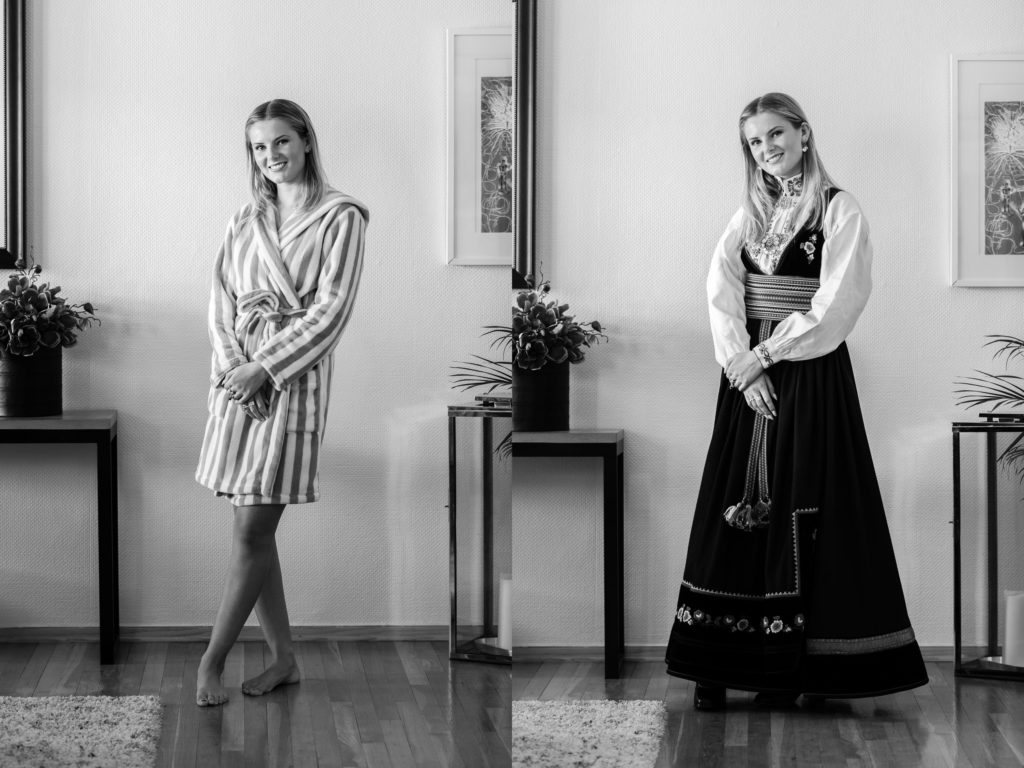
How much does a bunad cost?
Quick online research has shown you can easily spend between $2,000 and $10,000 to put together a quality bunad. I believe these prices to primarily focus on bunader for women. There are caveats to this, you could purchase fabric yourself (cotton, wool, silk) and for various price points, make them yourself.
Where can I purchase a bunad?
Oh this is fun. You will get a chance to play with Google Translate for the first couple.
In doing my research I came across this blog comment (she wasn’t referring to me):
And to correct the authers mistake, ther is only one specialist store that owns the original bunadsdesigns and that is Husfliden. They make quality! All others are fake. You can have them make it entirely for you or you can do what some families do, buy the original fabric there ( precut fabric) and have someone else do the sewing and embroidering.
Husflid – The One True Designer
It also appears there are a fair amount of sellers on Etsy with many good reviews and lots of stars.
Accessorize here in Minnesota with Sølje
Or this book on Amazon with 237 pages of bunader! If you just want to see all the options out there or have a great gift for your Norsk-descendant mother, this will do it.
If you like posts like this, leave a comment, and sign up for The Spur Trail email. Use the Pinterest photos below to save and share with others! Watch for this video and others on my Youtube channel, and look for current adventures on Instagram.





